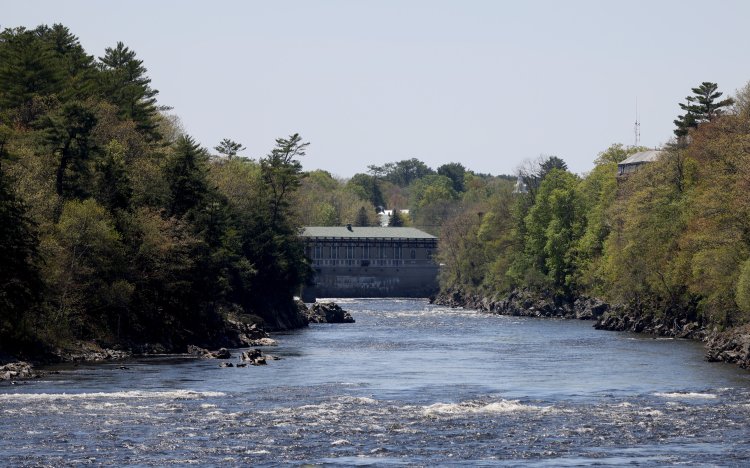
It’s nice to see people boating and fishing on the Kennebec River in summer since it was cleaned up after years of pollution and abuse.
People are drawn to the river. Communities have created walkways along it for people to enjoy the beauty and wildlife that inhabit it, including bald eagles, osprey and even sturgeon. Recreation on the river is encouraged. A town is lucky to have a river run through it.
But memories of the river from my childhood are hard to shake.
When I drive across the Margaret Chase Smith bridges over the Kennebec in Skowhegan, I can’t help but be haunted by events of the past and the days when the river represented danger and provoked fear in my youthful self.
As children of the 1950s and ’60s, we were warned to stay away from the river, which was dirty, polluted with raw sewage and logs that were driven through the rapids from the north down to the paper mills. There were days in Skowhegan where one could barely see the water, the river was so packed with logs.
Where now you see people swimming in the Kennebec, I remember the days when we wouldn’t even think of it. It was filthy and full of debris.
Beyond that, the river was scary to a young child. When I was little, I recall the deck of the channel bridge in Skowhegan was like a grate, where you could see right through to the water. It raged over the north dam and under the bridge, swirling past what is now the Old Mill Pub toward the Great Eddy of the river off U.S. Route 2.
Traveling over the bridge was frightening and, even after I became a teenager, walking across it was nerve-wracking. I still dream about that bridge, threatening to let go and be swallowed up by the river.
The river took my neighborhood friend and classmate, Richard J. Marshall Jr., when we were in the seventh grade. It was in early May, when the Kennebec was at its most violent, roiling brown and angry past Notre Dame School perched on the riverbank near where Richard disappeared. We attended school there that year because the public school system was building another school and our class had been displaced.
We, Richard’s classmates, spent more time that spring looking out the school windows to see if he would surface in the water than we did on our lessons. His body was never found.
A few days after Richard disappeared, a medical doctor in town met the same fate, in the same area of the river. Tadeo Zbyszycki, 53, was kayaking between the dam and Great Eddy when he was lost, his kayak overturning in the 6-foot-high rapids.
Then in 1973 when I was a junior in high school, Skowhegan resident Aime Gallant slipped off the dam in a December storm while working for Central Maine Power Co. near the south channel bridge and was enveloped by the river below. His body washed up on the riverbank in Benton the next year.
While many years have passed since those tragedies, the river has been cleaned up and access to it is viewed as a boon for both locals and visitors, I still can’t help but regard that river with unease.
Old habits die hard, I guess.
Amy Calder has been a Morning Sentinel reporter 37 years. Her columns appear here Sundays. She is the author of the book, “Comfort is an Old Barn,” a collection of her curated columns, published in 2023 by Islandport Press. She may be reached at [email protected]. For previous Reporting Aside columns, go to centralmaine.com.

We invite you to add your comments. We encourage a thoughtful exchange of ideas and information on this website. By joining the conversation, you are agreeing to our commenting policy and terms of use. More information is found on our FAQs. You can modify your screen name here.
Comments are managed by our staff during regular business hours Monday through Friday as well as limited hours on Saturday and Sunday. Comments held for moderation outside of those hours may take longer to approve.
Join the Conversation
Please sign into your CentralMaine.com account to participate in conversations below. If you do not have an account, you can register or subscribe. Questions? Please see our FAQs.